Zebrafish dopaminergic system
Dopamine is a monoamine neurotransmitter, part of the catecholamine family of monoamines, which also includes noradrenaline and adrenaline.
Dopaminergic (DA) neurons are found throughout the forebrain in distinct clusters, each with characteristic local and/or long-range projections. There are no DA neurons in the midbrain or hindbrain of zebrafish. The catecholaminergic cells in the hindbrain are noradrenergic (NA) neurons located in the locus coeruleus and the medulla oblongata. DA and NA neurons make up some of the major long-range projection systems in the vertebrate brain (Tay et al., 2011).
In addition to its role as a neurotransmitter, dopamine also functions as a hormone released from the hypophysis (pituitary gland). Through its neurotransmitter and hormonal functions dopamine controls a wide range of behaviours in the brain of both vertebrates and invertebrates. These functions include cognition, voluntary movement, motivation, reward pathways, mood, attention and learning (Schweitzer et al., 2011).
The majority of DA neuronal clusters are located in the diencephalon of the zebrafish brain. These diencephalic clusters have been assigned numbers DC1-DC7 based on their location along the anterior-posterior axis.
In the telencephalon there are two bilateral clusters of DA cells in the olfactory bulb (OB) and the subpallium (SP).
DA neurons are also found in the amacrine cell layer of the retina, the anterior and posterior parts of the parvocellular preoptic area and the periventricular pretectum.
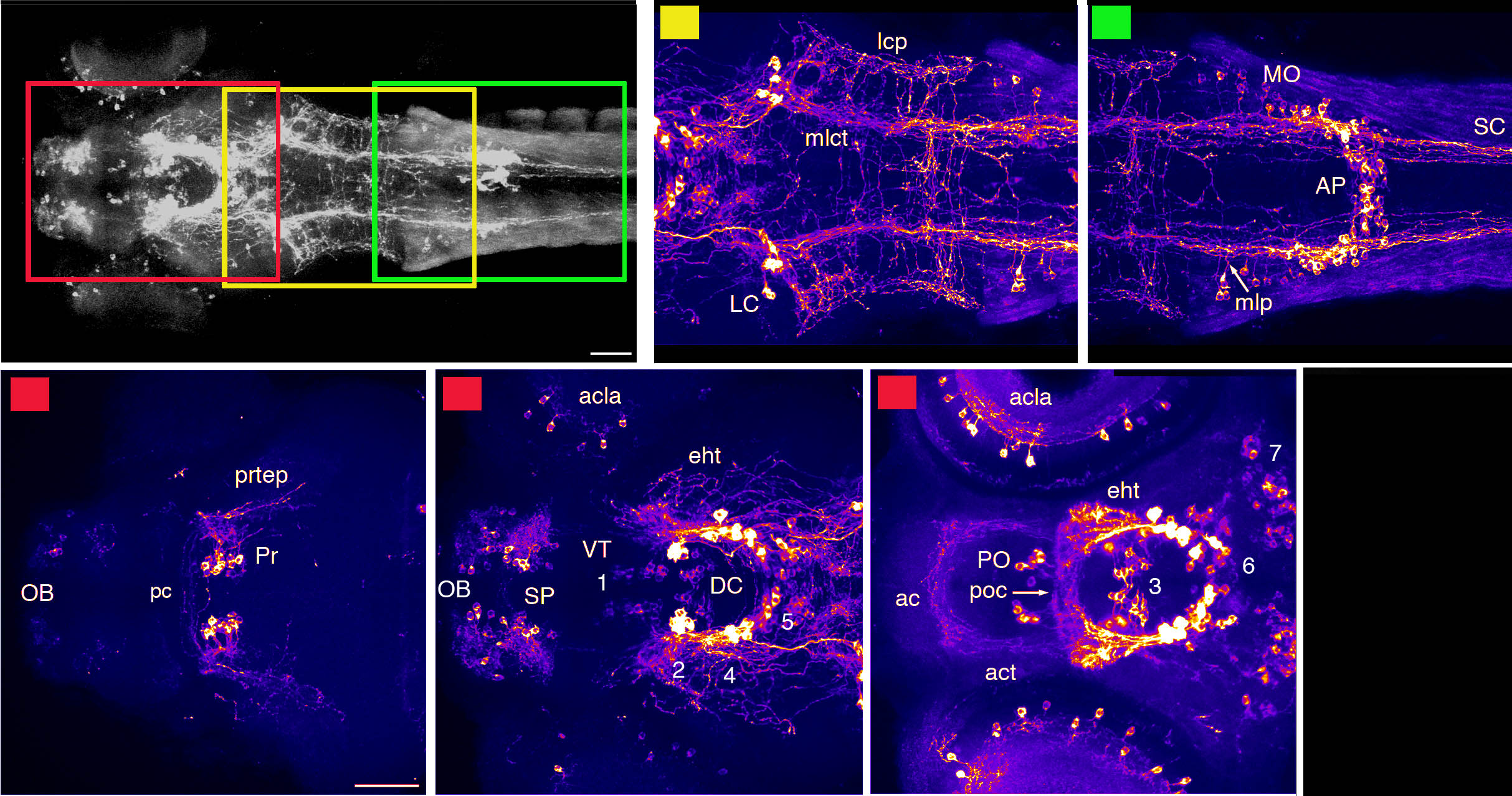

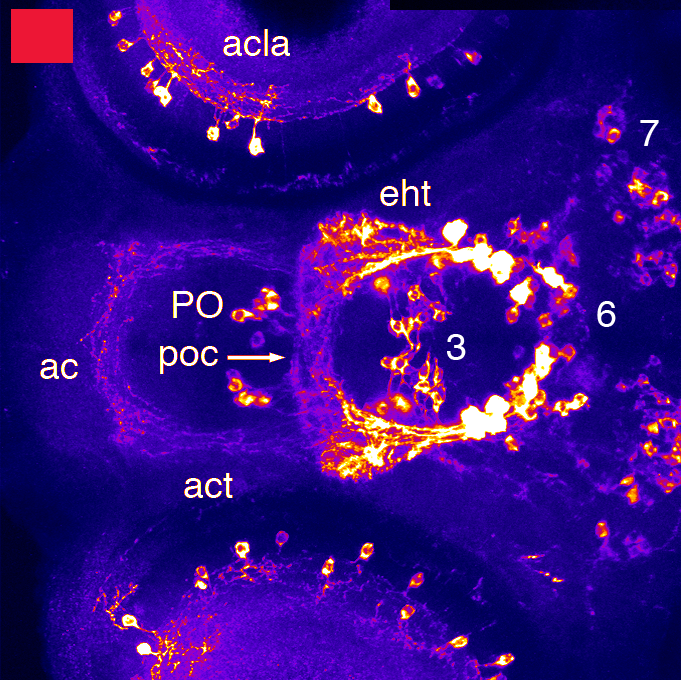
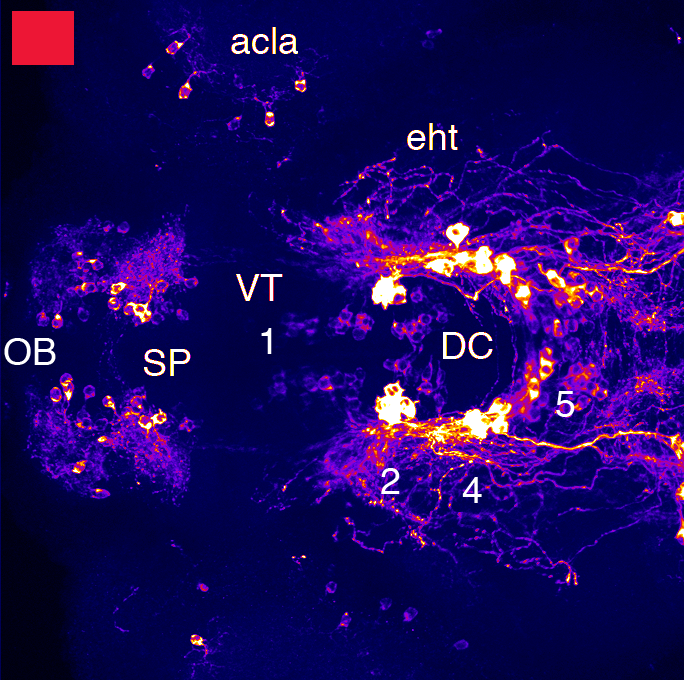
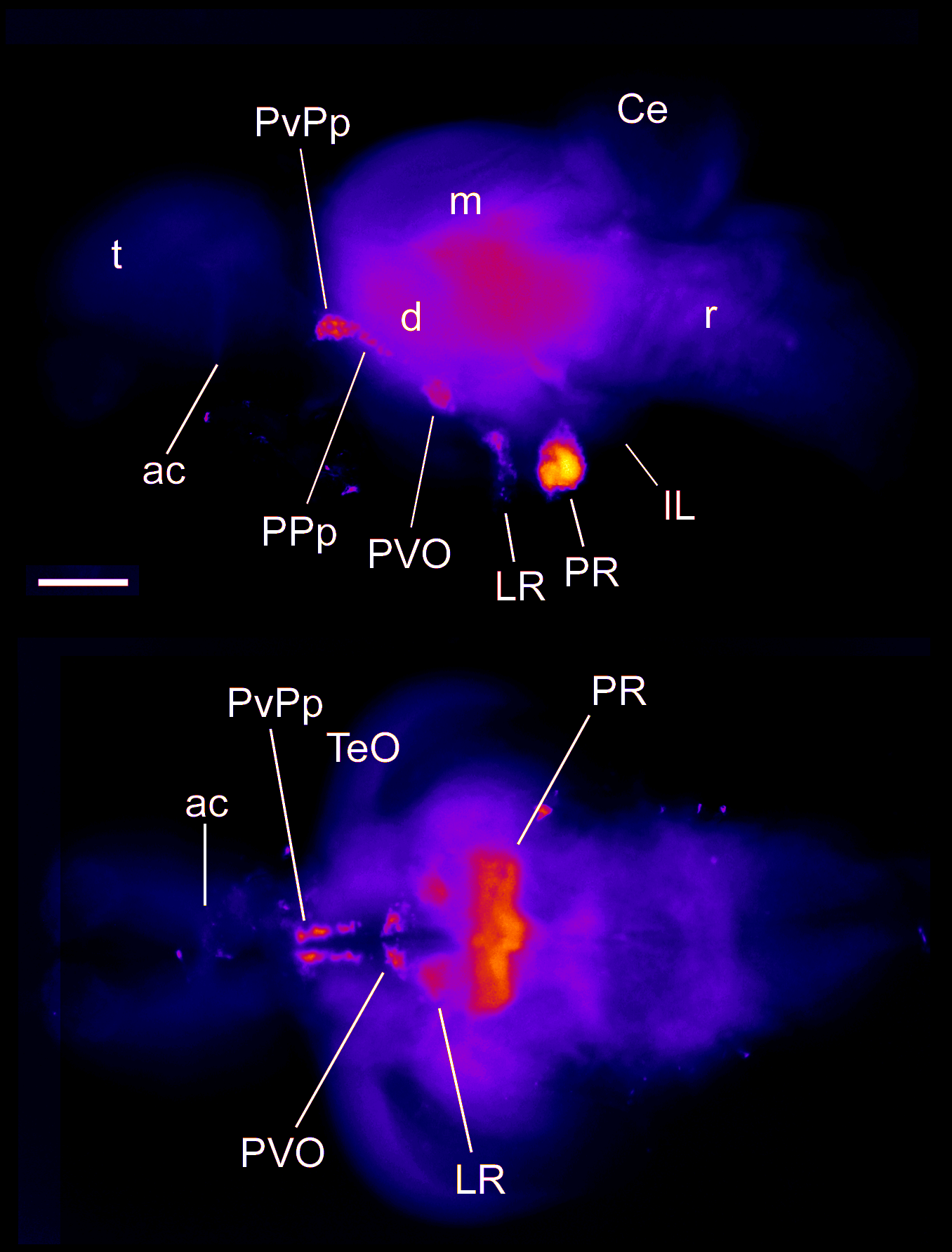
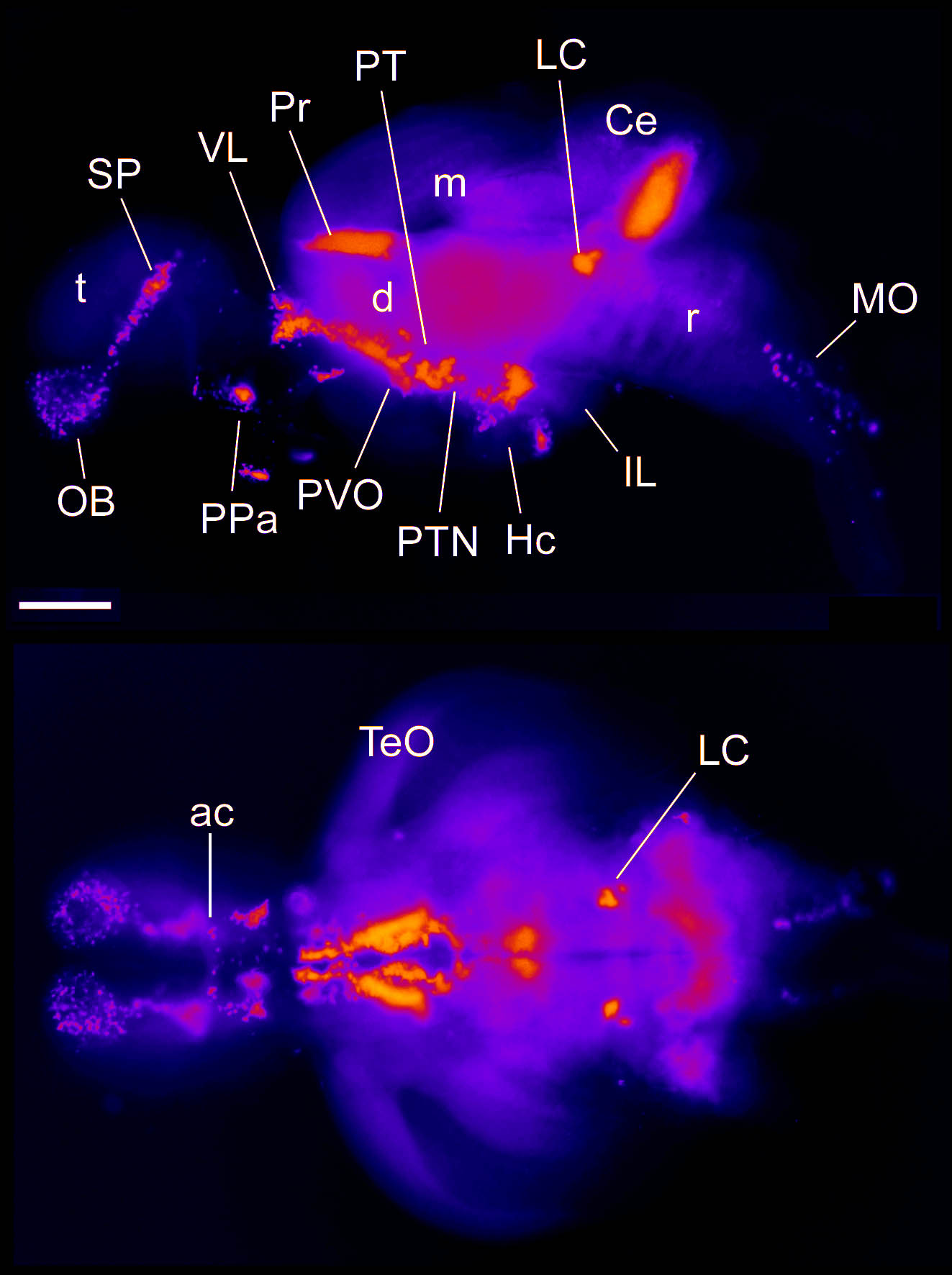
This tutorial was written by Andy Simmonds. All images are modified from Kastenhuber et al., 2010. We thank Wolfgang Driever for supplying us with these beautiful images.
Key Publications
Tay, T. L., Ronneberger, O., Ryu, S., Nitschke, R., & Driever, W. (2011).
Comprehensive catecholaminergic projectome analysis reveals single-neuron integration of zebrafish ascending and descending dopaminergic systems.
Nature Communications, 2(1), 171–112.
Kastenhuber E., Kratochwil C. F., Ryu S., Schweitzer J., Driever W. (2010).
Genetic dissection of dopaminergic and noradrenergic contributions to catecholaminergic tracts in early larval zebrafish.
J. Comp. Neurol. 518, 439–458. doi: 10.1002/cne.22214
Rink E., Wullimann M. F. (2001).
The teleostean (zebrafish) dopaminergic system ascending to the subpallium (striatum) is located in the basal diencephalon (posterior tuberculum).
Brain Res. 889, 316–330. doi: 10.1016/s0006-8993(00)03174-7
Ma P. M. (1997).
Catecholaminergic systems in the zebrafish. III. Organization and projection pattern of medullary dopaminergic and noradrenergic neurons.
J. Comp. Neurol. 381, 411–427
Schweitzer, J., Löhr, H., Filippi, A., & Driever, W. (2012).
Dopaminergic and noradrenergic circuit development in zebrafish.
Developmental Neurobiology, 72(3), 256–268.
McLean, D. L., & Fetcho, J. R. (2004).
Ontogeny and innervation patterns of dopaminergic, noradrenergic, and serotonergic neurons in larval zeb- rafish.
The Journal of Comparative Neurology, 480(1), 38–56.
Wen, L., Wei, W., Gu, W., Huang, P., Ren, X., Zhang, Z., Zhu, Z., Lin, S., and Zhang, B. (2008)
Visualization of monoaminergic neurons and neurotoxicity of MPTP in live transgenic zebrafish. Developmental Biology. 314(1):84-92.

